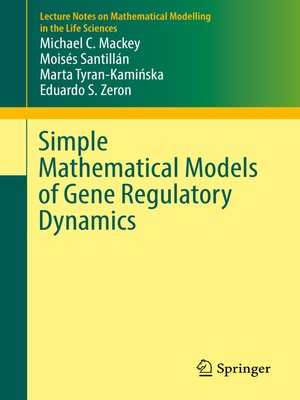Simple Mathematical Models of Gene Regulatory Dynamics
ebook ∣ Lecture Notes on Mathematical Modelling in the Life Sciences
By Michael C. Mackey

Sign up to save your library
With an OverDrive account, you can save your favorite libraries for at-a-glance information about availability. Find out more about OverDrive accounts.
Find this title in Libby, the library reading app by OverDrive.



Search for a digital library with this title
Title found at these libraries:
| Library Name | Distance |
|---|---|
| Loading... |
This is a short and self-contained introduction to the field of mathematical modeling of gene-networks in bacteria. As an entry point to the field, we focus on the analysis of simple gene-network dynamics. The notes commence with an introduction to the deterministic modeling of gene-networks, with extensive reference to applicable results coming from dynamical systems theory. The second part of the notes treats extensively several approaches to the study of gene-network dynamics in the presence of noise—either arising from low numbers of molecules involved, or due to noise external to the regulatory process. The third and final part of the notes gives a detailed treatment of three well studied and concrete examples of gene-network dynamics by considering the lactose operon, the tryptophan operon, and the lysis-lysogeny switch. The notes contain an index for easy location of particular topics as well as an extensive bibliography of the current literature. The target audience of these notes are mainly graduates students and young researchers with a solid mathematical background (calculus, ordinary differential equations, and probability theory at a minimum), as well as with basic notions of biochemistry, cell biology, and molecular biology. They are meant to serve as a readable and brief entry point into a field that is currently highly active, and will allow the reader to grasp the current state of research and so prepare them for defining and tackling new research problems.







